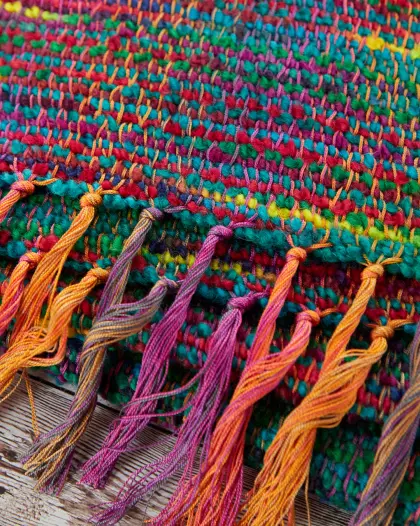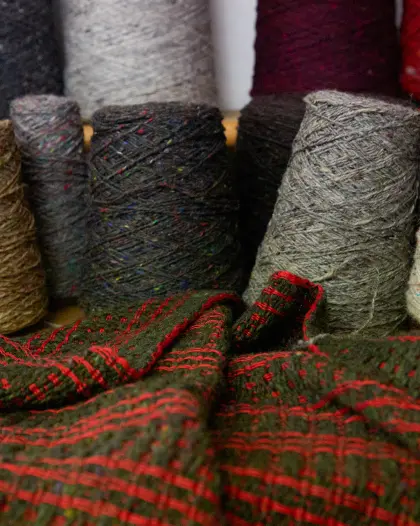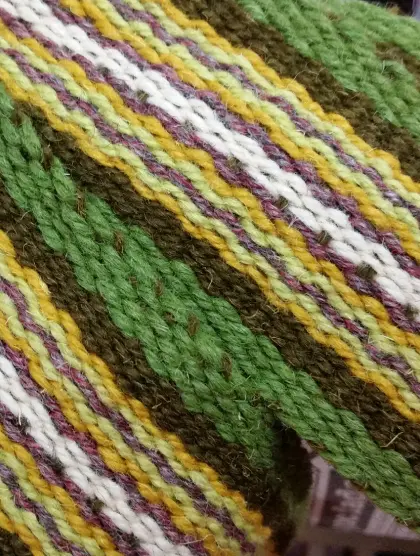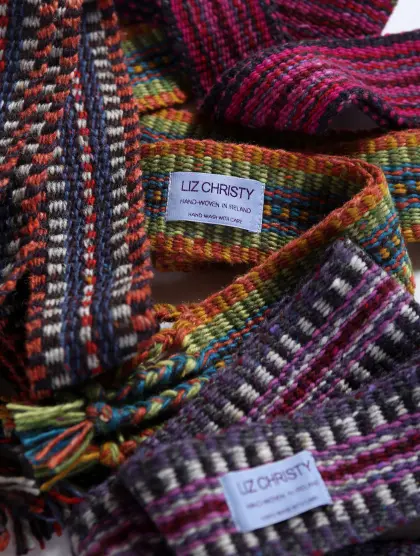Your cart is currently empty!
Precious Time
and Alchemy
In describing her weaving, Liz says, ‘The threads pass through our hands many times from start to finish. Time is what goes into every rhythmically hand-woven piece. In her down-to-earth way, Liz’s passion for what she does began nearly forty years ago, and she has been building relationships with her customers and suppliers since. This authenticity is woven into each scarf. Her designs feature mainly natural materials, beautiful Donegal yarns, specially spun bouclé wool and kid mohair, and locally bred Alpaca. During the hand-dyeing process, these yarns take on part of her colour-loving soul in magical alchemy, resulting in memorable and vibrant colours.
Undoubtedly, hand-weaving is a slow process when compared with electrically enhanced and power looms. The ‘flying shuttle’ on Liz’s looms was a big contributor to the development of the industrial revolution. However, this is where the similarity to the weaving mill ends. Liz’s techniques are mindful, and she runs her business based on quality; the quality of the textiles she produces and the quality of life for the people weaving the scarves on the looms. The hand-weavers paint with thread and the looms are their canvas. Liz Christy’s Swallow Studios is an artisan production workshop.
Slow Fashion Tomorrow’s Heirlooms
Very early on, Liz recognised that competing on price alone was unsustainable. Instead, she focused on the unique value of her craftsmanship. Her customers appreciate the time and skill that go into creating her accessories. Her scarves not only enhance the wearer’s appearance but also offer the practical benefit of maintaining warmth when needed. Each piece is an individual work of art, made with care to be loved and enjoyed.
Crafting Authentic, Hand-Woven Irish Scarves
It is vital that Liz can stand over her work and authentically tell the story of their making in Ireland. And where better than the county where she was born and dearly loves, nestled among the Drumlin hills. Liz’s scarves are slow fashion, high quality and distinctive gifts, to be worn and enjoyed. With care and gentle hand-washing, Liz Christy’s hand-woven scarves will become tomorrow’s heirlooms. For Liz Christy and the brand that she has built up; it is essential that she can say truly that her scarves are hand-woven traditionally in Ireland. She has trained her weavers. It is a small business with a small core team of people who make the magic happen. Hand-weaving is an age-old craft and Liz’s looms are powered by both hand and foot. All her textiles have a woven selvedge.
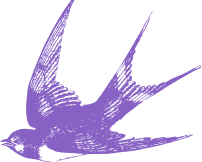
Scarves & Crios Belts
Crafted by Hand, Unique Variations
Our scarves and our crioseanna, are the outcome of a series of many processes, all carried out by our hands”. When asked, “How long does it take to make a scarf?”, it is impossible to give a concise answer because there are no two scarves the same. Each process impacts the finished fabric. Consistency is important, but because we are not machines, variations are the result of the human hand and are part of the beauty and authenticity of our work.
Step By Step
Warp Preparation
We prepare the warp, the vertical threads, by counting them on the rotating warping mill. This is the first part where inspiration comes into play, be it Monet’s paintings, Kavanagh’s poetry, or the sun setting over the bog. Usually, we make a warp long enough to weave seven scarves, one after another.
Heddle Threading
The heddles on the loom are then meticulously threaded with the warp using a tiny hook. If using the same weave structure as already on the loom, we will tie the new warp onto the ends of the old one, thread by thread. This means working through 200, 300, or perhaps 600 tiny little knots.
Loom Dressing
We ‘dress’ the loom, which involves methodically combing the warp, tensioning it, and ‘beaming’ these fine threads or ends as they are called. They are tied to and rolled onto a rotating beam at the back of the loom. The front end of the warp is then tied under tension to the front beam. Tension is checked and altered until even across the warp which is then ready for weaving. As a designer hand-weaver, you know exactly where each thread will go technically.
Dyeing Process
When hand-dyed yarns are added into the mix, serendipity happens on the loom and gives us great joy as we weave and see how the yarns and colours shimmer as they are woven together. The hand-dyeing of the weft wool is a process that Liz undertakes on the opposite side of the workshop floor where she has her dye area set up. The boucle wool has been custom spun for Liz in a 200-year-old spinning mill in Yorkshire. It comes in 500g hanks, prepared with extra ties to make handling easier and safer when hot. Liz has always kept dye recipe books, so while colourways may be repeated, there are never two identical hanks. It is simply impossible, and this uniqueness is an added feature of our scarves.
Drying Yarn
After a short spin, the hanks are hung up in the drying room.
Winding Wool
When dried completely, they are ready to be ‘un-hanked’ into ‘cakes of wool’. The hank is stretched using a rotating wooden ‘swift’. A winder is manually twisted, and a cake of wool is wound to a convenient size.
Bobbin Filling
Then comes the filling of the bobbins for the flying shuttle with our multi-coloured wool. We have manual rotating ‘bobbin winders’ for this job, and we dexterously guide the wool gradually onto the bobbin with one hand while turning the wheel with the other.
Weaving Setup
The bobbin basket is filled. The number of bobbins depends on how much wool is put on, the length of the scarf required, and how closely it is beaten – there are so many variables, hence, it is impossible to say how long it takes to make a scarf. The weaver is now ready to settle into a rhythm on their loom and enjoy weaving the scarves.
Final Touches
When the weaving is complete the scarves are pulled off from the front beam of the loom, as this is where the fabric is stored as it is woven. The gap left between each scarf as they are woven becomes the fringes, as they are cut, counted and knotted.
Scarf Finishing
The scarves are hand-washed and double-rinsed to bring out the luxurious softness of the fibres. They get a short spin dry to remove the excess water and then they hang in the drying room.
Detailing
The fringes are combed and trimmed. The label is then sewn onto the scarf, ready to be boxed for the customer.


